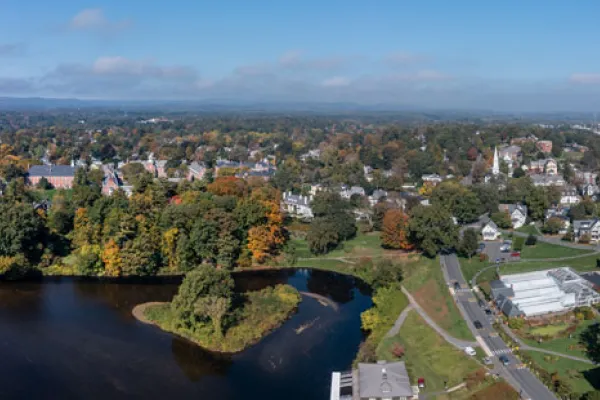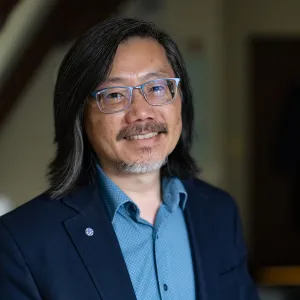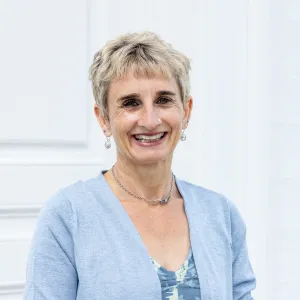Brief History: Smith’s Land Acknowledgment
150th Anniversary
The statement of respect for the first inhabitants of college land serves as a “prayer” and a pathway to address the harms of the past

Published July 2, 2025
When Luz Orozco ’21 first arrived at Smith in 2018, she looked around and wondered, “where are my people?”
Orozco, whose family has Indigenous roots in Colombia, South America, knew there were other Indigenous students on campus, but felt “we were sort of invisible” to each other and the larger college community.
She began connecting with other students who shared her identity and joined Indigenous Smith Students Alliance, a support and advocacy group.
“We started doing research around how many Indigenous students had graduated from Smith and what they did,” Orozco says. “And we started making friends and mentors in the Five College system who were crafting land acknowledgements for their schools.”
Land acknowledgment, which recognizes the original inhabitants and stewards of the land, “is a traditional custom that dates back centuries in many Native nations and communities,” according to information from the National Museum of the American Indian. “Making a land acknowledgment should be motivated by genuine respect and support for Native Peoples.”
Given the history of displacement and dispossession of Indigenous nations, “speaking and hearing words of recognition is an important step in creating collaborative, accountable, continuous, and respectful relationships with Indigenous nations and communities,” the museum’s description says.
Research and organizing by Orozco and fellow students led to a proposal for a land statement that was presented at a collegewide Inclusion and Diversity Conference in April 2019.
“That was the first time the land acknowledgment was delivered,” recalls Floyd Cheung, Smith’s vice president for equity and inclusion. “We took what the students had developed and aligned it with statements by other colleges. Smith’s Indigenous land Statement was ratified by the president’s cabinet that October—in time for Cromwell Day.”
Smith’s land statement stands out, Cheung notes, because it calls on the community to “acknowledge and celebrate the presence of Indigenous people here among us today.”
“We all wanted to begin with an acknowledgement, but not to end there,” he says. “We know we need more education and action around Indigenous justice.”
To that end, the college recently established an Indigenous Justice Working Group—a committee of staff, students, and faculty—which is exploring ways that Smith can support Indigenous students and build relationships with Native American and Indigenous communities in the region.
The group has submitted a first set of recommendations to President Sarah Willie-LeBreton, including a call “to explore and exhaust all avenues for returning institutional land back to Native American and Indigenous communities and peoples,” says co-chair Javier Puente, associate professor of Latin American and Latino/a studies.
Puente says the group’s work is an opportunity to “rethink and reconsider the college’s relationship with Indigenous and Native American nations and communities—past, present, and future.”
As director of religious and spiritual life, Matilda Cantwell has recited Smith’s land acknowledgement at numerous college events, including Rally Day and Commencement.
“To me, it feels like prayer,” Cantwell says. “When people hear those words over and over, it’s beautiful and helps ground them in space and time.”
In the spirit of ensuring that the statement is “not just empty words,” Cantwell has added her own words of introduction, reminding listeners that the land acknowledgment “was initiated and fashioned by Indigenous students in collaboration with faculty and administration,” and framing the statement as a way to help the community move “from being overwhelmed by the harms of the past to confronting the opportunities of the present.”
For Orozco—who is currently studying for a master’s degree in linguistic anthropology at the University of British Columbia in Vancouver—the land acknowledgment is both a form of recognition and a call for connection.
“We felt it was important for students to know that Indigenous peoples are still here and for the Indigenous students to know that they are seen,” she says.
Smith’s land acknowledgment “is a pathway for people to connect,” Orozco adds. “That’s what we were hoping for in crafting it, and that’s what it’s doing.”

